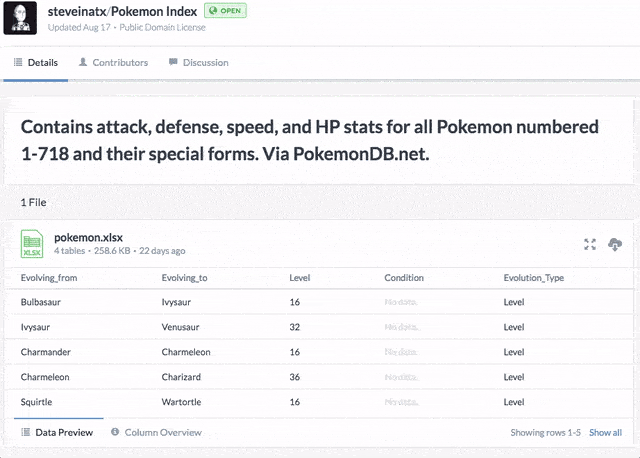























Sep 08, 2016
data.world Team

Collaboration and contribution are two of the most discussed concepts inside the data.world product team, and consequently the areas we’ve focused on the most in our user testing.
A platform centered around user generated or contributed data needs to have a tight and unambiguous contribution model in order to succeed. The goal is to encourage contribution at the right time, in the right increments, and in ways that align user and community incentives.
I like to divide our contribution model into the following levels:
Contributing new datasets: original data or found data
Working on the data: enhancements, cleanups, annotations, documentation
Working with the data: joins, queries, analysis, visualization
Social context: questions, discussions, citations, likes, shares
Clarifying the levels of contribution is the first step, but the model has to account for units of contribution as well — from deep, thoughtful chunks of work to more ad hoc pieces — what I like to call “drive-by contribution.”
In the future, this means I can upload data I’ve painstakingly collected into data.world, and others can immediately pitch in to help me clean, annotate, and enhance this data, or even build schemas and ontologies that help contextualize it within a specific topic or field.
We have a lot in store as we work to embed this contribution model into our product, and just recently we’ve rolled out some features that allow easy granting of contributor status to your open or private datasets. Also new are contributor requests, so anyone with something to add can send a request to be a contributor to your open dataset.
So if you have a few more Pokémon to add to this dataset, go for it! Maybe it’s a collaboration in the making!

Collaboration and contribution are two of the most discussed concepts inside the data.world product team, and consequently the areas we’ve focused on the most in our user testing.
A platform centered around user generated or contributed data needs to have a tight and unambiguous contribution model in order to succeed. The goal is to encourage contribution at the right time, in the right increments, and in ways that align user and community incentives.
I like to divide our contribution model into the following levels:
Contributing new datasets: original data or found data
Working on the data: enhancements, cleanups, annotations, documentation
Working with the data: joins, queries, analysis, visualization
Social context: questions, discussions, citations, likes, shares
Clarifying the levels of contribution is the first step, but the model has to account for units of contribution as well — from deep, thoughtful chunks of work to more ad hoc pieces — what I like to call “drive-by contribution.”
In the future, this means I can upload data I’ve painstakingly collected into data.world, and others can immediately pitch in to help me clean, annotate, and enhance this data, or even build schemas and ontologies that help contextualize it within a specific topic or field.
We have a lot in store as we work to embed this contribution model into our product, and just recently we’ve rolled out some features that allow easy granting of contributor status to your open or private datasets. Also new are contributor requests, so anyone with something to add can send a request to be a contributor to your open dataset.
So if you have a few more Pokémon to add to this dataset, go for it! Maybe it’s a collaboration in the making!
Get the best practices, insights, upcoming events & learn about data.world products.